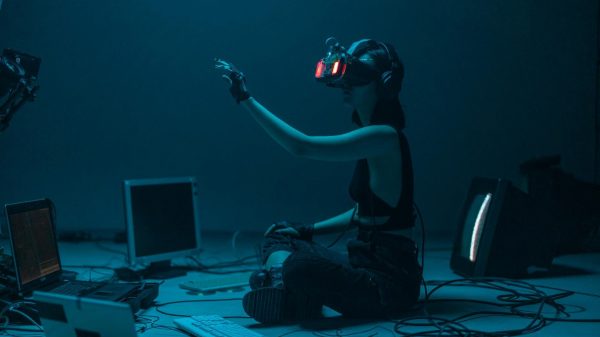According to Statista, this new digital environment is expected to be worth more than $2.5 billion by 2030. This is undoubtedly very striking and of interest to new investors. For those who are looking for how to invest in the metaverse, here is a short guide.
What is the metaverse?
The metaverse is a virtual reality accessed through special electronic devices such as Virtual Reality glasses. Each user has an avatar, which is their digital representation and can be customised to interact with other members of the immersive world.
It can therefore be defined as a second reality, but in a digital space. Users can contact and interact with friends, work with colleagues, enjoy leisure activities and even buy a home. The main aim of the metaverse is to combine aspects of both the digital and physical worlds.
Many companies are competing to build the most user-friendly interface. So far we’ve seen events like what happened in March 2022, where presenters and Grammy nominees had an immersive VR experience through the CEEK space or the wedding celebration in the metaverse opened by Decentraland in April this year.
These virtual worlds, interconnected to offer multi-sensory experiences, can also be conceived as an economic system, which aspires to be a driver of virtual currency and new workspaces.
5 ways to invest in the metaverse
There is a perception that the only way to invest in the metaverse is through virtual currencies. However, there are different sectors that are already entering this universe, such as real estate, videogames or entertainment brands, among others. This diversity offers new approaches to investing in the metaverse.
Tokens and cryptocurrencies
Each metaverse has its own tokens and cryptocurrencies. These are virtual payment currencies, generally used to satisfy the user’s needs such as: the purchase of games, housing, clothing, etc. As with traditional cryptocurrencies, the virtual currencies of the metaverse vary according to the interests of the users of each platform. Therefore, the value of their capitalisation depends on buying and selling, both within the metaverse and on external platforms that trade with them.
Games in the metaverse
In recent years, the consumption of video games has grown exponentially, mainly due to the momentum generated by The Sandbox and Decentraland. Such games represent 3D worlds that offer new environments in which to socialise. Here players can customise their avatars and interact with others.
Some games have a play to earn mechanism, i.e. they earn rewards that can be converted into cryptocurrencies. This allows players to monetise their progress while having fun. One of the most popular games among investors is Battle Infinity, where players must strategise to earn rewards in IBAT, the game’s native token.
Investing in NFT
Another prominent form is the NFT. These cryptoassets play a crucial role in the development of the metaverse, as they add value to digital products. A unique case has been its use to represent the intellectual property of digital art. NFTs certify that the digital artwork is original, unique and exclusive.
Real estate metaverse
Land in the metaverse is highly sought after in the virtual real estate market. The facilities and cities where users will be able to attend sporting, work or cultural events will be built. Decentraland and The Sandbox are two of the most relevant creators, and both sell plots to start building virtual worlds.
When a user acquires real estate in the metaverse, they can rent or sell it for more than they paid for it or even build virtual spaces on top of it. Digital real estate comes in the form of non-fungible tokens, based on Blockchain technology.
Funds specialising in Big Data and Blockchain
Within the showcase of new digital trends, and even positioned within cryptocurrencies, are the investments of funds specialising in the positioning of Big Data and Blockchain trends. In today’s digital revolution, data and security are paramount. Big Data makes it possible to classify and analyse large amounts of data in order to obtain answers in real time. While blockchain offers the security of reliable transactions. For this reason, it may be worthwhile to invest directly in companies developing this technology. It may be risky, but diversification of investments is avoided by betting on these megatrends.
Actions to invest in the metaverse
Acquiring shares in the metaverse is a simple task, as all you need is a digital wallet and the ability to participate in the currency exchange. While there are many, and growing, options for investing in the metaverse, here are a few to consider:
- Roblox is a popular gaming platform for children. About 50% of users are under 13 years of age. In addition, Roblox allows users to develop their own content and upload it to connect with other users, and wants to use the momentum of the metaverse to continue to grow.
- Microsoft launched HoloLens, a product that allows users to try out new 3D holographic objects as if they were in the real world. In addition, it has bought Activision Blizzard for 70 billion dollars in order to position itself as a major developer and promoter of the virtual world.
- Nvidia, the multinational company, has always been interested in virtual technology. Already in 2020 it presented a beta version of Omniverse a platform that focuses on the construction of 3D spaces and objects.
- Unity Software aims to democratise the design of video games and 3D environments. A large number of experts call Unity the main engine or tool for the development of the metaverse.











